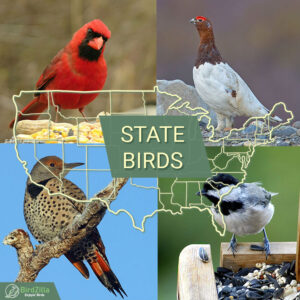State + Birds

In this Birds State Category page, you’ll find articles from the most common wild and backyard birds of each state to the designated state birds, we have a plethora of knowledge to offer.
The most common (wild and backyard) birds of each state
Our collection provides valuable insights into the most prevalent birds you can encounter in your state, based on real data.
By exploring this topic, you will not only become familiar with the birds’ names but also learn about their distinctive characteristics, behaviors, and even their melodious songs.
Whether you’re an avid birdwatcher or simply curious about the feathered friends that share your surroundings, this topic will give you a deeper understanding of the avian diversity in your state.
State Birds of U.S
Did you know that each state in the US has its own designated state bird?
These birds hold significant cultural and symbolic value, representing the unique identity of their respective states.
Exploring this topic will provide you with a fascinating glimpse into the history and reasoning behind the selection of these avian ambassadors.
You’ll learn why each bird was chosen, what attributes make them stand out, and interesting facts that add to their allure. Whether it’s the majestic Bald Eagle of Alaska or the vibrant Northern Cardinal of Illinois, each state bird has its own story to tell.
Start exploring now, and let the fascinating realm of birds captivate your imagination.
